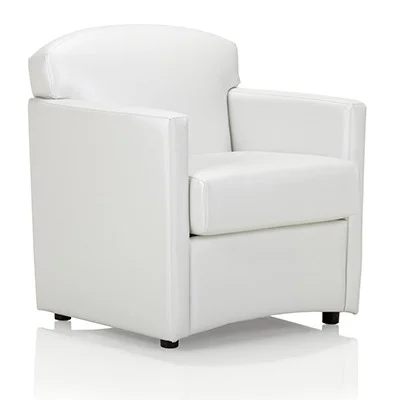Enhancing Patient Experience Through Thoughtful Furniture Design

Patient experience is a critical aspect of healthcare, with patient satisfaction being a key metric for measuring quality. While interaction with healthcare professionals is essential, other factors, like the physical environment, play a significant role. This blog will explore how evidence-based design and thoughtful healthcare furniture choices can improve the patient experience.
The Impact of Physical Environment
Research has shown that the physical environment of a healthcare setting can impact patient stress, safety, effectiveness, quality of care, trust, and, ultimately, patient satisfaction. Facilities prioritizing easy access, privacy, family inclusion, and comfort have been found to lead to lower stress levels, higher compliance with treatment plans, improved staff accuracy and mood, and ultimately, higher patient satisfaction.
Evidence-Based Design (EBD)
This factor refers to making choices about the surrounding environment on credible research to achieve the best possible outcomes. While there are limited audiology-specific EBD studies, medical experts can apply the principles and data from other healthcare settings to audiology practices. Factors like office design, furniture placement, lighting, and amenities can create a more patient-centered care environment.
Practice-Based Evidence (PBE)
In cases where EBD studies are not feasible, practice-based evidence (PBE) can be leveraged. PBE involves collecting data from patients and staff within the specific practice to inform design decisions. It may include observations, surveys, or interviews and helps generate empirical evidence. Design decisions based on PBE can also reflect regional attitudes and preferences, enhancing the patient experience.
The Role of Furniture Design
Furniture design plays a crucial role in creating a positive patient experience. Here are some key considerations:
- Comfort and Accessibility
Choose furniture that is comfortable and accessible for patients of all abilities. Ensure seating is supportive and easy to get in and out of, with ample space for mobility aids. Additionally, consider adjustable furniture to accommodate different patient needs. - Privacy and Confidentiality
Provide privacy through strategically placing furniture, such as dividers or screens. This method creates designated spaces where patients can feel comfortable discussing sensitive information. - Welcoming, Homely Spaces
Design a warm, inviting setting using aesthetically pleasing furniture that aligns with the overall design theme. Incorporate soft seating, artwork, and plants to create a calming ambiance. - Functional and Organized Spaces
Select furniture that contributes to efficient workflows and organization. Ensure designated areas for paperwork, storage, and technology integration are meant to enhance staff productivity and streamline processes.
Healthcare furniture design is a significant aspect of creating a patient-centered care setting. By incorporating evidence-based design principles and utilizing practice-based evidence, audiology practices can enhance patient satisfaction, retention, and referrals. Thoughtful furniture choices prioritizing comfort, accessibility, privacy, and functionality contribute to a positive and welcoming patient experience.
For more information about business furniture and supply, reach out to us today at Gulf Coast Business and Furniture Supply.






; ?>/theme/img/ecl.jpg)